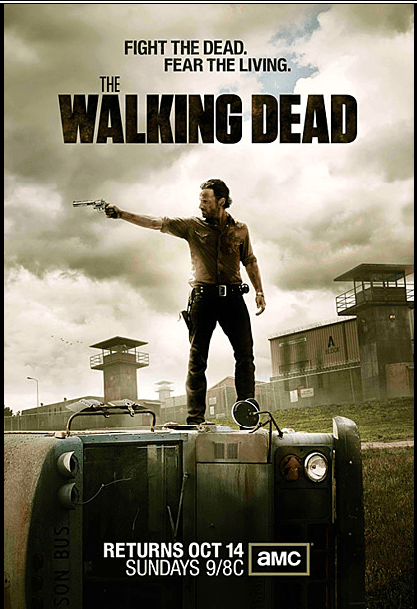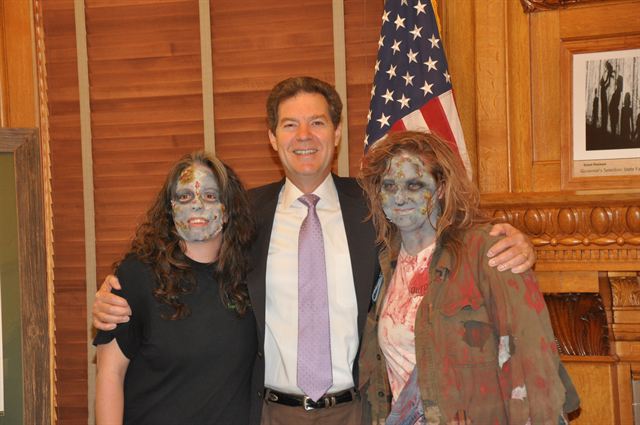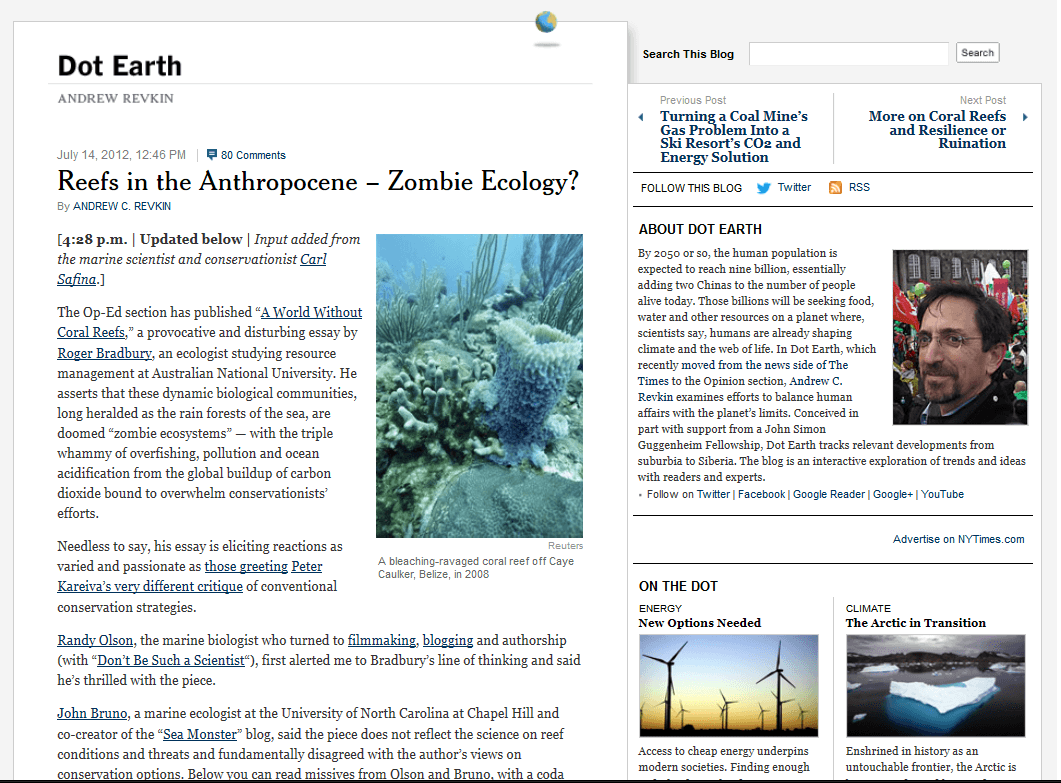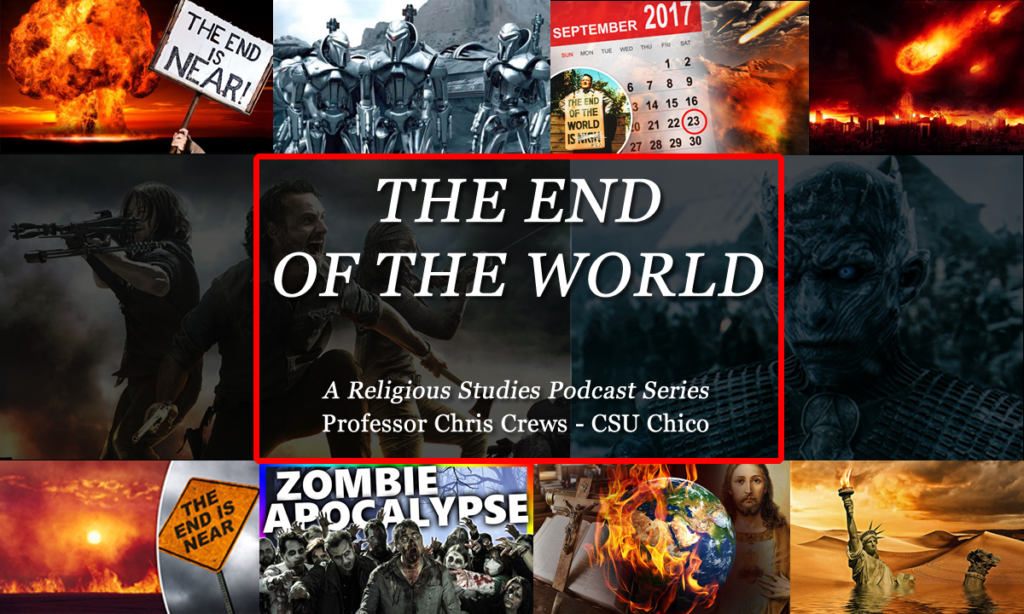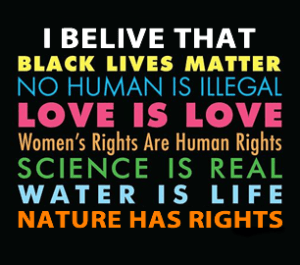Theorizing the Anthropocene – part 2
Ok, but as some have asked, what do the ideas of environmental risk or the Anthropocene have to do with zombies or monsters and popular culture? Here I will concede the links appear to be weaker. I want to move beyond any simplistic and uninteresting claims that zombies are dangerous and therefore a risk or that zombie pandemics often start as a virus and therefore can be seen as environmental issues. The link I want to develop has to do with the narratives being constructed within popular culture, especially tv and movies, about social collapse, future risk and the environment.
For example, in the past several years there have been an explosion of TV shows and movies which are set in some future world where a massive disruption has led to the collapse of the existing social order. In a majority of these shows there is no longer any working industrial infrastructure, especially power, and thus people have been reduced to something approximating late medieval or early frontier living. The concept of “foraging” becomes a central focus of daily living. People have return to quasi-tribal or gang lifestyles, and people are living in hastily constructed fortresses or makeshift compounds. The Colony, Revolution, Terra Nova, The Walking Dead, After Armageddon, Survivors, Apocalypse 2012: The World After Time Ends, The Apocalypse, 2012: Zombie Apocalypse, Resident Evil, Outcasts, Jericho, Life After People, and Apocalypse How are just a few examples of TV shows or movies that I have watched and documented in the past few months which all revolve around this basic theme. And this does not even begin to touch on the larger genre of survivalesque shows like Survivor, Lost, Survivorman, Medicine Men Go Wild, or Man vs Wild which dominates programming on places like The Discovery Channel.
The reasons for these various end of civilization scenarios vary. In some, there is a viral pandemic which wipes out millions of people virtually overnight, leading to the collapse. In others there is a nuclear conflict which leads to the collapse of society. In still others the cause of the collapse is never made explicit, and the story just begins with the premise of 10 or 15 years after the collapse. In still others, especially those with a sci-fi bent, humans are living as colonists on another planet following an exodus from Earth, usually due to some combination of nuclear disaster or environmental catastrophe. And in a final, smaller portion of these narratives there is some Biblical storyline with the remaining survivors being either non-believers left behind or those with weak faith awaiting the final Rapture.
Regardless of which particular version of the collapse scenario we look at, with the possible exception of the Rapture narratives, the focus of the storyline is how to survive and rebuild civilization in this new and uncertain world. So we see people resort to small-scale farming, hunting and gathering, collecting water and building other systems which are essentially pre-industrial in nature. The sword, axe and crossbox become the new weapons of choice to defend oneself from roving Hobbesian gangs bent on total destruction (be they living or undead). In many versions we see a strong man or ruling junta emerges out of the chaos to lead the survivors. Occasionally this leader is also a messianic figure.
So why is it that in show after show we imagine our industrial society, and very often civilization itself, as collapsing in the not-too-distant future, mostly from environmental causes? Why does the world we imagine after this collapse more often resemble a Hobbesian State of Nature than a Communitarian utopia, even though we imagine communal lifestyles and restored “harmony with Earth” as the ideal? What I want to show by linking risk and environmental politics to the Anthropocene is how this scientific concept—humans as an unprecedented geologic force pushing the planet towards an uncertain and dangerous environmental future—is being enacted symbolically through these narratives.
Put simply, these narratives project the inevitable outcome of the underlying Anthropocene science in the context of continued environmental inaction and denial. In other words, if the shallow ecology worldview continues to hold sway, this will be our future—a world of ecological collapse and a return to “primitive” lifestyle outside the lived reality of modern industrial civilization. In a certain sense, we are moving backwards in time, which I think is particularly interesting given a) the underlying geological debates about the Anthropocene as a new geological epoch; b) the fundamentalist rejection of deep time and earth history; and c) the claim that this might actually be an improvement for the human condition from the deep ecology political worldview. In other words, this is what human civilization might look like when organized at a truly sustainable scale, whether we get there by our own choice or are forced into it by our own shortsighted inaction and disregard for the planet.
Now where do Zombies fit into all of this? The answer is two-fold. First, zombies have become one of—if not the dominant—monster archetypes in popular culture. With some comedic exceptions, zombies normally symbolize a future world full of uncertainty and deadly risks. The current advertising campaign for new season of The Walking Dead perfectly captures this with the tag line: “Fight the Dead. Fear the Living.”
For anyone who follows the story, words like walkers, herds and foraging are common lingo. The show is full of strong men and Hobbesian dangers. There are men of faith and pastoral farms with clean water. Other narratives which appear include critiques of our short-sighted reliance on fossil fuels, often felt most acutely when the group is trying to flee an area overrun by zombies. There is discussion of plagues throughout history as a form of natural population control and even talk of human extinction caused by a zombie virus. How we maintain a sense of “society” in the face of inhuman circumstances is a common theme many characters grapple with.
My argument is that these ideas connect to different environmental discourses in circulation today while also drawing from environmental concerns which can be understood through the Anthropocene as a cultural and not just geologic concept. We can imagine debates over population growth, worries about new pandemics caused by errant biotechnology, arguments about peak oil and a lack of an alternative energy infrastructure leading to industrial collapse, and many other arguments as ways to make sense of the risks facing us now and in the future.
What makes the zombie particularly useful, I believe, is that it is a fear we can put a face on. Zombies are monsters we can face. They are also monsters that have our faces. They represent uncertainty in action. But they also represent a form of risk which can be measured—a few walkers to an entire herd—and partially controlled—through vigilance, stealth, fortifications and team work. Unlike rising sea levels or more erratic weather or melting ice caps or increasingly polluted air and water, zombies represent a real and present danger to those facing them. The zombie is the walking embodiment of a risk-driven future, one in which the old industrial model of society and civilization ceases to have any relevance or control. The future zombie world is a hybrid of equal parts ecological catastrophe and ecological utopia—catastrophic in the sense of the worst case environmental scenario coming true—and utopian in the sense of dreaming about a world not reliant on fossil fuels, big corporations and corrupt political regimes sanctioning the ongoing destruction of the planet under the guise of globalization and economic development. In its rawest form, these post collapse scenarios are the green anarchist dream of a world with no state or central authority—albeit ones that still manage to reproduce many of the dominant liberal and capitalist social relations of our current world.
And it is this link between disaster and zombies that makes it so powerful as a cultural symbol, and why the zombie has even managed to become institutionalized by the government. What began as a clever media campaign by some of the CDC staff has exploded into a national phenomenon, with the zombie now being an extremely effective public disaster preparedness meme. The CDC has developed a whole set of zombie preparedness materials and even has a dedicated zombie feature on its website. This zombie preparedness idea has spread like a virus, with some states even going as far as to make zombies part of official state emergency preparedness planning.
Just this month Kansas Governor Sam Brownback declared October “Zombie Preparedness Month,” and Kansas is using zombies as one of their emergency frames in public events, radio ads and even the state’s emergency website ksready.gov.
Yet another examples is the following bit of text which appeared on the FEMA website under a post titled “First there were Zombies; then came Hurricanes!” in 2011:
With June 1 only days away, FEMA, CDC and the rest of the team are busy preparing for the upcoming hurricane season. And now that you’ve taken the necessary precautions to prepare for a zombie apocalypse, you can start preparing for hurricane season, too. In recognition of Hurricane Preparedness Week, we want to remind you of some simple steps you can take. The same steps that we described in our zombie post (get a kit, make a plan, be informed) are key to getting prepared for a hurricane as well. (FEMA 5/26/2011)
And as a final example in this zombie-environmental disaster linkage, the original CDC zombie idea originated after a question posed by the CDC on their Twitter account during the March 2011 tsunami that hit Japan. In their tweet the CDC has asked people what they were preparing for and, to the CDC’s surprise, a lot of people said zombies. So the CDC followed up with their now infamous Preparedness 101: Zombie Apocalypse post which began the zombie emergency preparedness meme continuing today. So in this case it was a real life catastrophe—the 2011 tsunami and subsequent nuclear disaster in Japan, that spawned the zombie apocalypse as emergency preparedness meme. This is precisely the sort of feedback loop between popular culture and environmental risk discourse that I want to draw attention to as indicative of this new cultural idea of the Anthropocene and emerging ecological risks.
So although there is a much weaker connection between zombie narratives and ecological narratives, because zombies are seen as imaginary monsters while ecological disasters are real, I believe the growth of the zombie as a projection of future catastrophic risk is an important cultural component of how we can think about the Anthropocene. There are also few examples of explicit anthropocene+zombie+ecology links, ranging from discussion about coral reef (pictured at left) and bee colony collapse to fire ants and biological parasitism, but in these discussion the idea of the zombie is mostly about biological parasitism or collapsing ecosystems (half dead, half alive) and less about wandering monsters. However a recent Dot Earth post by Andrew Revkin titled “Reefs in the Anthropocene – Zombie Ecology?” hints at precisely how this trifecta could emerge in future environmental discourse. So although explicit links between ecology, zombies and the Anthropocene are few and still marginal, the potential to imagine this linkage is already clearly here and in popular circulation, as evidenced by Revkin’s post above. This is a bit more about how I imagine this linking being established and demonstrated through a wide range of popular culture and media examples.
To be continued in part 3…
###
